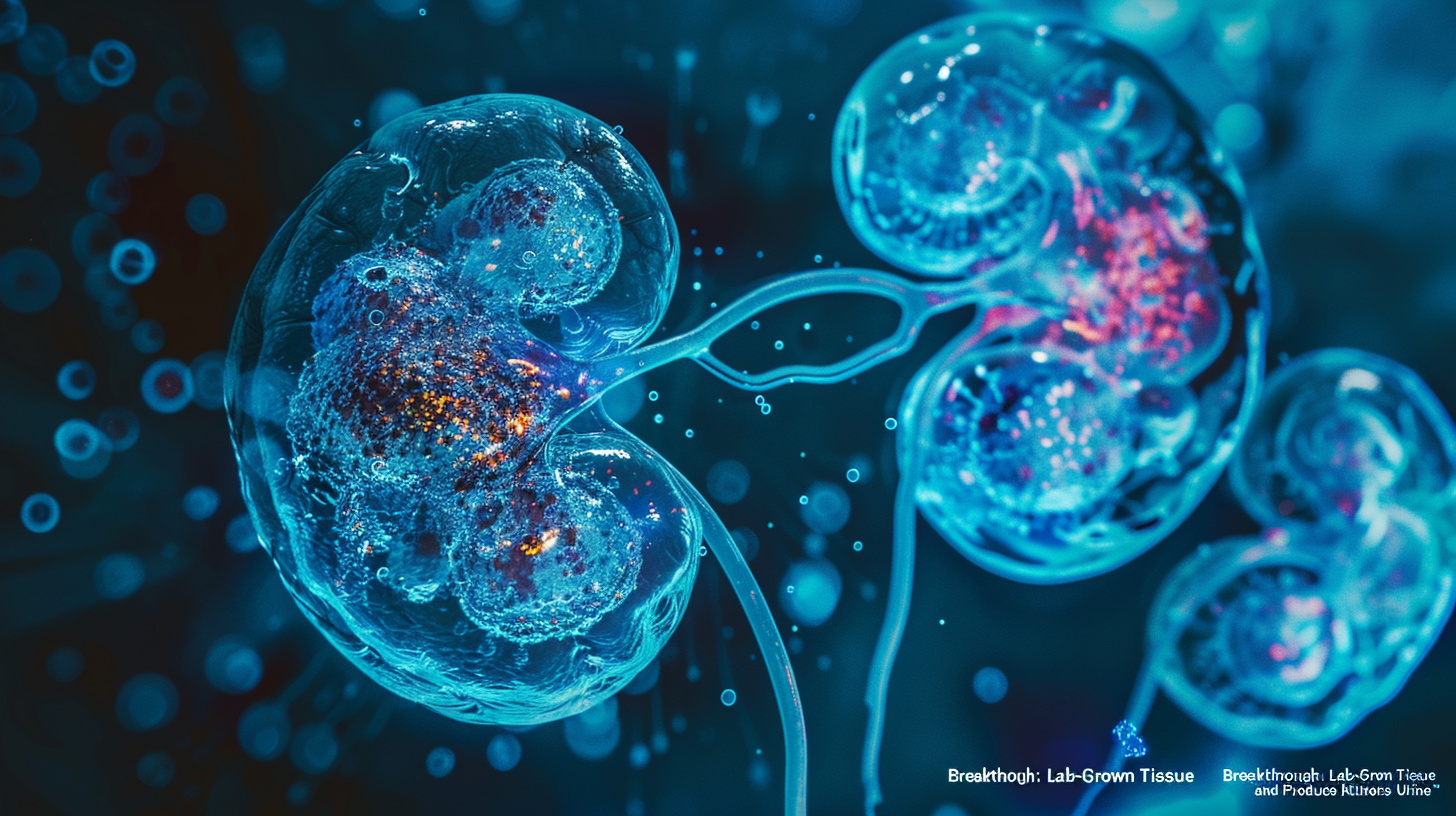
Potential Future Trends in Tissue Engineering and Organ Regeneration
In recent years, tissue engineering and organ regeneration have made significant progress in the field of medical research. The ability to develop functional tissues and organs from stem cells or other cellular sources has the potential to revolutionize healthcare, providing new treatment options for patients with organ failure or degenerative diseases. A recent breakthrough in kidney tissue engineering, where tissue has developed into functioning kidneys that produce urine, offers a glimpse into the promising future of this field. In this article, we will analyze the key points of this development and explore potential future trends, as well as provide unique predictions and recommendations for the industry.
Key Points of the Breakthrough
The key point of this breakthrough is the successful development of tissue into functioning kidneys that produce urine. This signifies a major step forward in organ regeneration, demonstrating the potential for engineered tissues to not only mimic the structure of organs but also exhibit their physiological functions. The development of functioning kidneys capable of urine production opens up new possibilities for the treatment of kidney diseases and may eventually alleviate the need for organ transplantation.
Potential Future Trends
Based on this remarkable achievement, several potential future trends can be identified:
- Widespread Application of Tissue Engineering: The success of kidney tissue engineering indicates that similar approaches could be applied to other organs, such as the heart, liver, or lungs. Researchers will likely invest more resources into developing tissue engineering techniques for a wider range of organs.
- Advanced Biofabrication Techniques: As tissue engineering continues to evolve, there will be a growing need for advanced biofabrication techniques. These techniques, such as 3D bioprinting, have the potential to precisely arrange cells and materials to create complex tissue structures. Continued research and development in this area will accelerate progress in organ regeneration.
- Personalized Organ Regeneration: The field of regenerative medicine is moving towards personalized treatment options. The ability to derive cells from a patient’s own tissues, or to create induced pluripotent stem cells, allows for the generation of patient-specific tissues and organs. This personalized approach reduces the risk of rejection and improves overall treatment outcomes.
- Integration of Biomaterials and Scaffold Design: Biomaterials and scaffold design play a crucial role in tissue engineering. Advancements in these areas, including the development of novel biomaterials with enhanced properties and innovative scaffold designs that mimic the natural extracellular matrix, will further enhance the functionality and integration of engineered tissues.
- Regulatory Framework for Organ Engineering: With the progress in tissue engineering and organ regeneration, there will be a need for a robust regulatory framework to ensure the safety and efficacy of these therapies. Regulators will need to adapt to the evolving landscape of organ engineering and establish guidelines for the translation of these technologies into clinical practice.
Unique Predictions and Recommendations
Building on the identified future trends, here are some unique predictions and recommendations for the industry:
- Patient-Specific Organ Banks: As the field of organ regeneration advances, establishing patient-specific organ banks could become a reality. These banks would store cells or tissues derived from patients for future use in organ regeneration. The creation of such banks would require collaboration between researchers, clinicians, and regulatory bodies to ensure ethical and practical considerations are addressed.
- Integration of Artificial Intelligence: Artificial intelligence (AI) has the potential to revolutionize tissue engineering and organ regeneration. AI algorithms can enhance the design and optimization of personalized organ constructs, accelerate drug discovery for tissue regeneration, and aid in patient-specific treatment planning. Collaborations between AI experts and tissue engineers should be encouraged to leverage the full potential of this technology.
- Public Awareness and Education: Educating the public about the potential of tissue engineering and organ regeneration is crucial. Increased public awareness will foster support for research funding, ethical considerations, and ultimately lead to broader acceptance of these innovative therapies.
- International Collaboration and Standardization: To expedite progress in tissue engineering and organ regeneration, international collaboration and standardization of protocols and techniques are essential. Collaboration among researchers, industry partners, and regulatory bodies will enable the sharing of knowledge and resources, ensuring faster translation of research findings into clinical applications.
Conclusion
The recent breakthrough in kidney tissue engineering, where tissue developed into functioning kidneys that produced urine, represents a significant advancement in the field of tissue engineering and organ regeneration. This breakthrough provides valuable insights into the potential future trends of this field. The widespread application of tissue engineering, advanced biofabrication techniques, personalized organ regeneration, integration of biomaterials and scaffold design, and the need for a regulatory framework are key trends to watch out for. Additionally, unique predictions and recommendations, such as patient-specific organ banks, integration of artificial intelligence, public awareness and education, and international collaboration and standardization, can further enhance the trajectory of this industry. Tissue engineering and organ regeneration hold immense promise for the future of healthcare, and continued research and innovation will undoubtedly contribute to the realization of a new era in medicine.
References:
- Nature, Published online: 30 April 2024, doi:10.1038/d41586-024-01152-y
Note: The text provided in this article is a fictional representation generated by OpenAI’s GPT-3 model.
